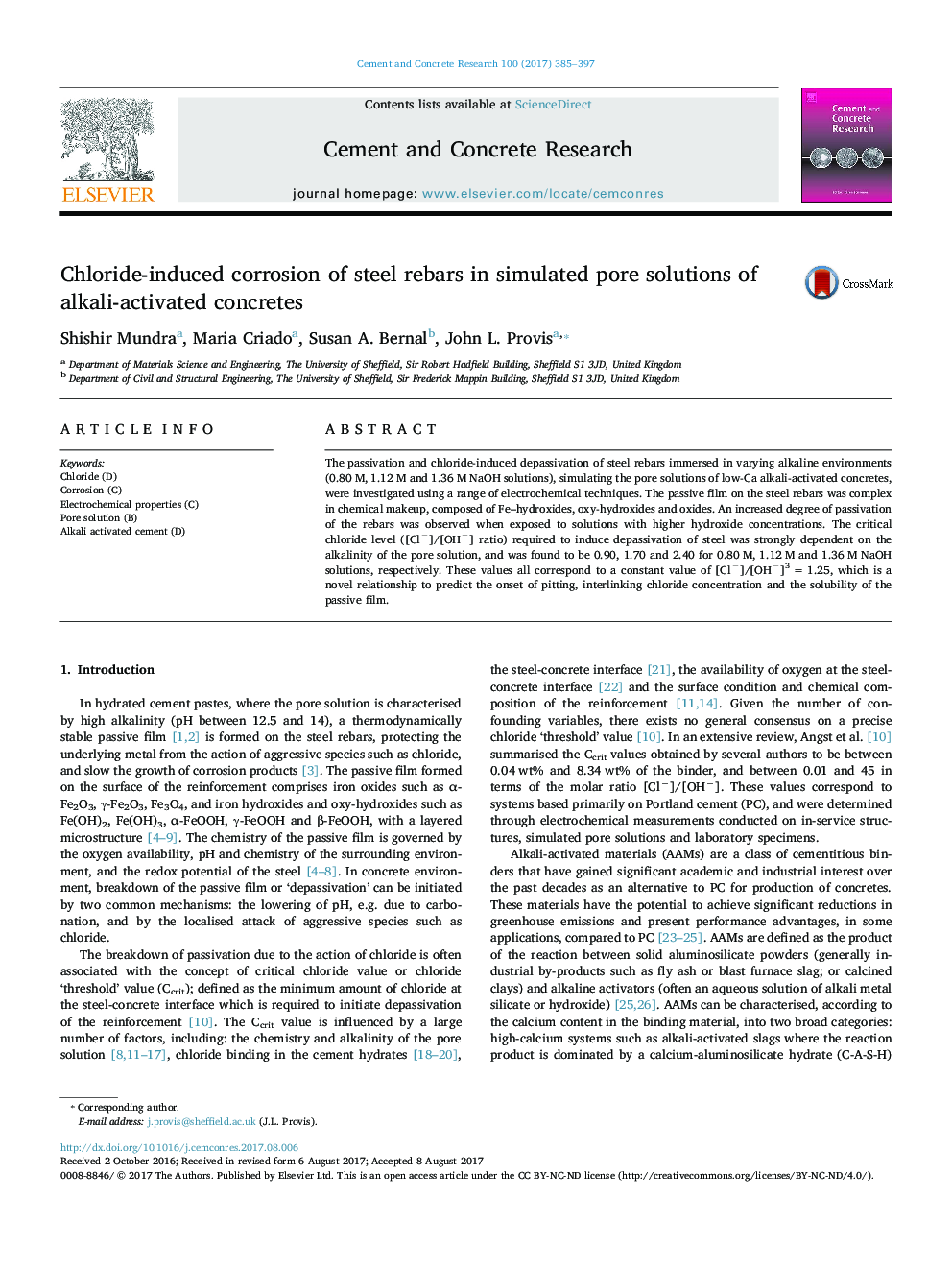| Article ID | Journal | Published Year | Pages | File Type |
|---|---|---|---|---|
| 5437036 | Cement and Concrete Research | 2017 | 13 Pages |
Abstract
The passivation and chloride-induced depassivation of steel rebars immersed in varying alkaline environments (0.80Â M, 1.12Â M and 1.36Â M NaOH solutions), simulating the pore solutions of low-Ca alkali-activated concretes, were investigated using a range of electrochemical techniques. The passive film on the steel rebars was complex in chemical makeup, composed of Fe-hydroxides, oxy-hydroxides and oxides. An increased degree of passivation of the rebars was observed when exposed to solutions with higher hydroxide concentrations. The critical chloride level ([Clâ]/[OHâ] ratio) required to induce depassivation of steel was strongly dependent on the alkalinity of the pore solution, and was found to be 0.90, 1.70 and 2.40 for 0.80Â M, 1.12Â M and 1.36Â M NaOH solutions, respectively. These values all correspond to a constant value of [Clâ]/[OHâ]3Â =Â 1.25, which is a novel relationship to predict the onset of pitting, interlinking chloride concentration and the solubility of the passive film.
Keywords
Related Topics
Physical Sciences and Engineering
Engineering
Industrial and Manufacturing Engineering
Authors
Shishir Mundra, Maria Criado, Susan A. Bernal, John L. Provis,
